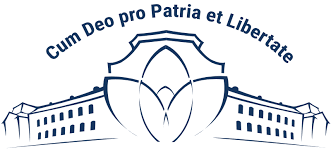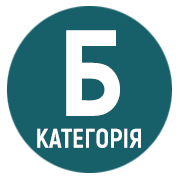THE RELIGIOUS COMPOSITION OF THE ETHNIC HUNGARIANS IN TRANSCARPATHIA BASED ON THE SURVEY ’SUMMA 2017’
DOI:
https://doi.org/10.32782/2786-5843/2023-2-2Keywords:
religious affiliation, SUMMA 2017, Hungarians in Transcarpathia, proportion of denominations, UkraineAbstract
The study of the religious composition in the countries of the post-Soviet space, including Ukraine and Transcarpathia, is made extremely difficult by the lack of statistical records of the religious breakdown and the absence of relevant census questions. In order to fill the data gap caused by the repeated postponement of censuses in Ukraine, we conducted a demographic survey of ethnic Hungarians in Transcarpathia in 2017, called SUMMA 2017. The main objective of the survey was to estimate the number and demographic characteristics of Hungarians living in Transcarpathia, and to provide a more precise estimate of the sporadic knowledge of the denominational composition of them. As a result of the survey, it was possible to obtain a much more accurate picture of the proportion of the largest denominations within the Transcarpathian Hungarians, both at county and settlement level, than previous estimates. The geographical distribution of the three most numerous denominations, Reformed, Roman Catholic and Greek Catholic, in the region are presented. The specificities of the changes in the religious composition in recent decades and their causes are discussed. Finally, we analyse the correlation of some relevant socio-demographic indicators with denominational affiliation. Based on the results of our research, it can be stated that the religious composition of the Hungarian population in Transcarpathia differs from the structure recorded in previous censuses and from the data reported by the individual churches. The main reasons for these changes can be found in the historical cataclysms of the 20th century, as well as in the changing demographic conditions of Transcarpathian Hungarians. According to our survey, nearly 2/3 of the Hungarians in Transcarpathia belong to the Reformed Church, which is much higher than the data and estimates for previous years. In addition, the number and proportion of Orthodox Hungarians also increased. In contrast, the Jewish community almost completely disappeared from Transcarpathia, and the proportion of those belonging to the Roman Catholic denomination decreased.
References
Huntington, S.P. A civilizációk összecsapása és a világrend átalakulása. Budapest: Európa Kiadó, 1998. 639 p.
Kepecs J. (szerk.). Kárpátalja településeinek vallási adatai (1880–1941). Budapest: Központi Statisztikai Hivatal, 2000. 246 p.
Józan L. A kárpátaljai református egyház. Hatodik Síp, 1989, 2. sz. pp. 17–20.
Csáti J. A kárpátaljai római katolikus egyház. Hatodik Síp, 1990, 1. sz. pp. 20–24.
Marosi I. Görögkatolikus magyarok Kárpátalján. Közösségek és templomok. Nagybégány–Beregszász: Szent Miklós Egyesület, 2014. 152 p.
Kocsis K. (főszerk.). Magyarország Nemzeti Atlasza – Társadalom. Budapest: Csillagászati és Földtudományi Kutatóközpont, Földrajztudományi Intézet, 2021. 196 p.
Molnár J. IV.2.2. Vallási megoszlás. Baranyi B. (szerk.). Kárpátalja. Pécs–Budapest: MTA Regionális Kutatások Központja–Dialóg Campus Kiadó, 2009. pp. 207–209.
Поліщук, Н. Релігійні вподобання населення України. 2015. URL: http://infolight.org.ua/content/religiyni-vpodobannya-naselennya-ukrayiny. Дата доступу: 19.11.2023.
Kocsis K. A Kárpát-medence történeti vallásföldrajza (10–21. század). Gál A., Frisnyák S., Kókai S. (szerk.). A Kárpát-medence történeti vallásföldrajza – Tanulmánygyűjtemény. Nyíregyháza–Szerencs: Nyíregyházi Egyetem Turizmus és Földrajztudományi Intézete–Bocskai István Katolikus Gimnázium, 2016. pp. 9–30.
URL: http://www.catholic-hierarchy.org/diocese/dmuka.html. Letöltés ideje: 2023.08.07.
Molnár D. I. Kárpátalja magyar és zsidó lakosságának számbeli alakulása az 1921–1944 közötti időszakban. Dobos S., Molnár F. (szerk.). Kárpátaljai Holokauszt. 1944 – az elhurcolások éve. Beregszász: Kálvin Nyomda, 2015. pp. 55–68.
Csernicskó I., Soós K. MOZAIK2001© Gyorsjelentés – Kárpátalja. Szabó A., Bauer B., Laki L., Nemeskéri I. (szerk.), MOZAIK2001© Gyorsjelentés. Magyar fiatalok a Kárpát-medencében. Budapest: Nemzeti Ifjúságkutató Intézet, 2002. pp. 91–135.
Tátrai P., Molnár J., Kovály K., Erőss Á. A kárpátaljai magyarok lélekszáma és a népesedésüket befolyásoló tényezők a SUMMA 2017 felmérés alapján. Kisebbségi Szemle, 2018, 3(3). pp 7–31.
Csernicskó I., Hires-László K., Karmacsi Z., Márku A., Molnár D. I., Máté R., Tóth-Orosz E. Hungarians and the Hungarian Language in Transcarpathia. Törökbálint: Termini Egyesület, 2023. 220 p.
Gereben F. Identitás, kultúra, kisebbség. Felmérés a közép-európai magyar népesség körében. Budapest: Osiris-MTA Kisebbségkutató Műhely, 1999. 280 p.
Tátrai P., Molnár J., Kovály K., Erőss Á. SUMMA 2017: a kárpátaljai magyarok demográfiai felmérése. Ferenc V., Kovály K. (szerk.). Kárpátalja mozgásban: társadalmi változások és interetnikus viszonyok az Euromajdan után Budapest: Bethlen Gábor Alapkezelő Zrt., 2020. pp. 21–51.
Ilyés Z. Kárpátalja németségének településtörténete. Észak- és Kelet-Magyarországi Földrajzi Évkönyv, 1999, 6. pp. 85–94.
Kovály K., Ferenc,V. Etnikailag és felekezetileg vegyes családok döntési stratégiái a kárpátaljai magyar szórványban. Regio, 28(1), 2020. pp. 70–105. https://doi.org/10.17355/rkkpt.v28i1.299
Tátrai P. A kárpátaljai magyar szórvány típusai, tagolási lehetőségei. Kisebbségi Szemle 5(3), 2020. pp. 7–31.






